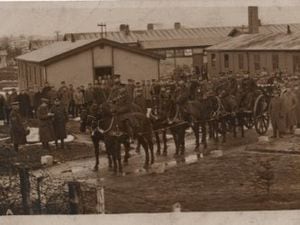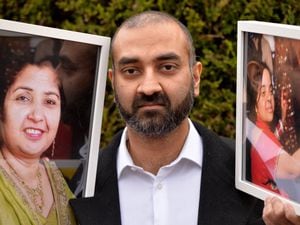Long road to vaccination victory
The rollout of an effective vaccine against Covid-19 is the latest triumphant step along a long road trodden by many heroes of science in a journey which was started by an eight-year-old boy.

The prospect of eventual victory over coronavirus is all down to him, James Phipps, the son of Edward Jenner's gardener.
It may be going too far to say that he put his own life on the line to save the lives of untold millions of others around the world over the last 200 years – but that's only because the lad may have been given no choice in the matter.
What the conversation was between vaccination pioneer Jenner, a country doctor from Gloucestershire who was looking for a human guinea pig for his theories, and the boy's father, is lost to history. Money may or may not have changed hands.
But the upshot was that James' invaluable contribution to the cause was that he did not die a terrible death when, in 1796, Jenner deliberately infected him with smallpox in an experiment which was to say the least both morally dubious and risky.
However, that is judging past events by modern standards. Jenner, who had been orphaned as a child, was not motivated by wilful recklessness, but by a desire to do good.
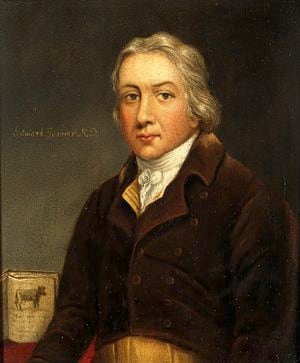
He had heard milkmaids who had caught cowpox from the cows they were milking did not afterwards catch smallpox.
So when milkmaid Sarah Nelmes consulted him about blisters she had got through milking a cow named Blossom, he took his chance to experiment, deliberately infecting James with her cowpox pus.
Cowpox is a relatively benign virus but one which is related to much-feared smallpox.
James became mildly ill and then got better. The dose of cowpox was stage one of the experiment. Stage two was to infect him deliberately with smallpox, which was much more dangerous and often fatal, especially in children. Those it did not kill, it disfigured, as once the scabs of the pustules fell off they were left with pockmarked skin.
So the stakes were high. But young James stayed healthy. Becoming ill with cowpox had somehow protected James from deadly smallpox.
And so the principle of vaccination was demonstrated, and it marked the breaking of the dawn on the scientific fightback against some of the world's most deadly diseases.
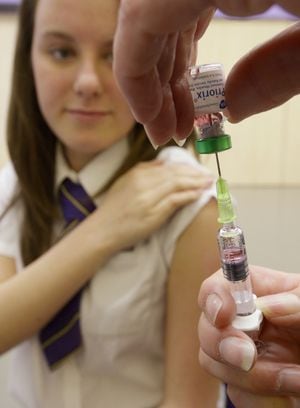
That cowpox infection had led to his body producing antibodies and building its defences, so his immune system had its guard up ready to see off smallpox when it arrived.
Encouraged, Jenner carried out other successful experiments on poor farm labourers and their children, and workhouse inmates.
The basic ideas Jenner explored were by no means new, and variolation – the practice of intentionally infecting somebody with smallpox itself to provide future protection from the full-blown disease – had been practised for hundreds of years. Variola is the scientific name for the smallpox virus.
So why is Jenner seen as the father of immunology?
He had approached things with some scientific rigour, although he did not know why his method worked, nor did anybody else for many years. Crucially his successful trials were widely publicised. He saw his discovery as a gift to the world, which indeed it was.
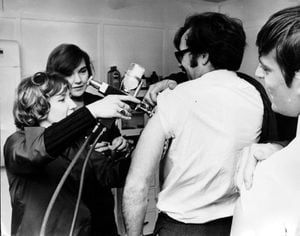
Most importantly Jenner's vaccination method, using cowpox to give immunity rather than smallpox material, was a breakthrough, because it was far safer than variolation. Variolation saw around two to three per cent of people variolated actually die of smallpox, and furthermore those variolated could also pass on the disease to other people.
Variolation was banned in Britain in 1840 and in 1853 vaccination against smallpox was made mandatory in Britain in the first three months of an infant's life. There was some opposition on the grounds of infringement of civil liberties.
As for James Phipps, he was to live to a reasonably long life, dying in 1853. He received a reward of sorts – when he was married with children, Jenner gave him a free lease on a house.
Jenner's work was a gamechanger and also gave us the word vaccination, which is derived from the Latin name for cowpox, vaccinia, itself derived from vacca, Latin for cow.
It was the start of the story, but not the end of smallpox, which was still endemic in Africa and Asia in the late 1960s.
The World Health Organization launched an intensified plan to eradicate global smallpox in 1967. It was on paper a massive task. How do you vaccinate the whole world?
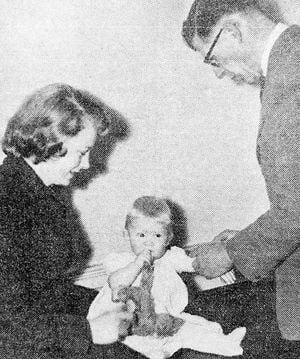
The answer was that you don't need to. With vaccination campaigns zooming in and isolating hotspots, together with surveillance, and education, smallpox was officially declared eradicated by the WHO in 1980.
The last known natural case was in Somalia in 1977. This year marks the 40th anniversary of the only such global triumph over an infectious disease.
It was in Birmingham, in tragic circumstances, that the world saw its last smallpox fatality of all. The victim was a 40-year-old medical photographer at the University of Birmingham Medical School, who died in 1978. She was infected while working near a laboratory which was doing research on smallpox viruses.
After Jenner started the process which heralded the eventual conquest of smallpox, development of vaccines for other diseases was slow, but has accelerated rapidly in recent decades due to advances in virology, molecular biology, and vaccinology.
After smallpox, the next routinely recommended vaccines were developed early in the 20th century. These included vaccines that protect against pertussis – whooping cough – in 1914, diphtheria (1926), and tetanus (1938). These three vaccines were combined in 1948 and given as the DTP vaccine, and later became a 5-in-1 vaccine additionally protecting against polio and Hib disease.
In late September 2017 the UK replaced it with a 6-in-1 vaccine for all babies born on or after August 1, 2017, the sixth element being protection against hepatitis B.
Before vaccines existed, these diseases used to kill thousands of children in Britain every year.
In 1963 the measles vaccine was developed, and by the late 1960s vaccines were also available to protect against mumps (1967) and rubella (1969). These three vaccines against these highly infectious diseases, which can have serious complications, were combined into the MMR vaccine in 1971.
Poignant
An alleged link between the MMR vaccine and autism spooked some concerned parents and led to a decline in uptake of MMR, but the study was discredited and the NHS says it is safe with many studies showing no evidence of any such link.
It has not been a story of unbroken successes, as there have been major medical defeats. The 1918-1920 Spanish Flu pandemic killed, by some estimates, around 50 million people worldwide.
In living memory perhaps the most poignant, and ultimately uplifting, vaccine story is the defeat of polio, a dreaded disease which saw an epidemic in Britain in the 1950s, and which particularly affected children, hence its alternative name of infantile paralysis.
High profile victims included American president Franklin D Roosevelt, who lived with disability (he was diagnosed with polio, although in modern times some have cast doubt on that diagnosis). Great British Bake Off's Mary Berry contracted polio at the age of 13 and had to spend three months in hospital. Other well known names who had childhood polio include actor Donald Sutherland, and singer Joni Mitchell.
A highly contagious and incurable disease, it can lead to varying degrees of muscle weakness. One in 200 infections leads to irreversible paralysis and, among those paralysed, five to 10 per cent die when their breathing muscles become immobilised.
An "iron lung" was developed for those whose lung muscles were so badly affected that they could no longer breathe unaided. Some patients with permanent paralysis of the lungs had to stay encased up to their necks in these large cumbersome contraptions for the rest of their lives.
The heroes of the polio story are Dr Jonas Salk, and Albert Sabin, who separately developed vaccines which ended the nightmare. Salk's injected vaccine was launched in 1954 and mass vaccination began in America the following year with immediate and dramatic results.
More than 38,000 polio cases were reported in 1954 in the United States. After five years of vaccination, the number of paralytic polio cases had dropped to 2,525 in 1960.
Sabin developed an oral polio vaccine. But by then Salk's vaccine was well established and proven safe, and there was a feeling that a mass trial of a new unproven vaccine was not warranted. So Sabin turned for his tests to the Soviet Union – he was Russian-born and had contacts there.
It was successful, and was licensed in the US in 1961. Today both vaccines are used, although Sabin's oral vaccine, which requires just two drops in a child's mouth, proved much easier to use in mass immunisation campaigns and gave lifelong immunity.
Routine vaccination against polio in Britain started in 1956, and the nation switched to Sabin's oral vaccine in 1962, memorably administered on a sugar cube.
The last indigenous outbreak was in the late 1970s and the last case of natural polio infection acquired in Britain was in 1984.
Complete eradication of polio worldwide is tantalisingly close, and there is a global campaign supported by Rotary International. Today it is endemic in just two countries, Pakistan and Afghanistan.
Today there are vaccines which protect against many diseases.
The list is long, and according to the World Health Organisation includes: cervical cancer, cholera, diphtheria, hepatitis B, influenza, Japanese encephalitis, measles, meningitis, mumps, pertussis (whooping cough), pneumonia, polio, rabies, rotavirus, rubella, tetanus, typhoid, varicella, and yellow fever.
Others are in the pipeline, either being under development or being piloted, including against ebola and malaria.
To the list of vaccination triumphs we can now add Covid-19.

